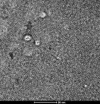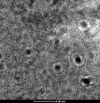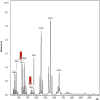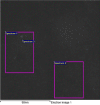Identification and Localization of Gold Nanoparticles in Potassium Ion Pores: Implications for Kir Blockade
- PMID: 27125647
- PMCID: PMC4906087
- DOI: 10.1007/s40119-016-0060-8
Identification and Localization of Gold Nanoparticles in Potassium Ion Pores: Implications for Kir Blockade
Abstract
Introduction: In our previous study, we found that negatively charged gold nanoparticles with spermidine have the potential of blocking inwardly rectifying potassium channels (Kir), both at the cellular and the tissue level.
Methods: For the purpose of the present study, we purified the cytoplasmic domain of the Kir 3.1 receptor from Escherichia coli. Using single particles with surface coating by transmission electron microscopy, we identified the gold nanoparticles at the cytoplasmic side of the human Kir channel.
Results: Energy-dispersive X-ray spectroscopy showed the presence of the gold deposits in the cytoplasmic domain of the Kir receptor.
Conclusion: In conclusion, we could identify undecagold in the ion pore of the Kir3.1 channel in order to clarify its direct blocking effect in the Kir ion pore by undecagold.
Keywords: CryoEM; Cytoplasmic domain; Kir3.1; STEM.
Figures











References
LinkOut - more resources
Full Text Sources
Other Literature Sources

